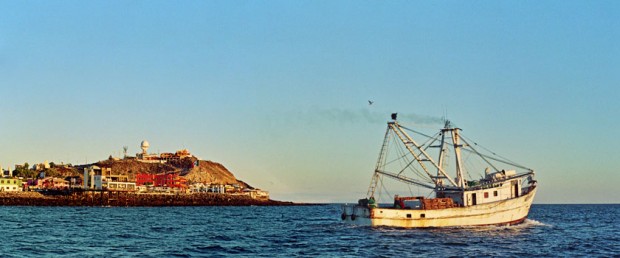 Puerto Peñasco a.k.a Rocky Point was officially founded in 1928, although the region has a tremendous history among the indigenous groups of the malpaís, sandieguito, amargoza and cia-ha o’odham. From 1850 – 1910 the area was important for individuals and companies mining for gold at Sierra Pinta.
Puerto Peñasco a.k.a Rocky Point was officially founded in 1928, although the region has a tremendous history among the indigenous groups of the malpaís, sandieguito, amargoza and cia-ha o’odham. From 1850 – 1910 the area was important for individuals and companies mining for gold at Sierra Pinta.
Curiously, the area was named Rocky Point (which today is also known as Puerto Peñasco) in 1826 by Lieutenant William Hale Hardy, a retired official from the Royal Naval English Army who traveled along the coasts of Sonora and Baja California in search of pearls and precious metals. Rather than pearls, one of the principal products taken from the sea related to Puerto Peñasco is shrimp, whose history is still honored and reflected as seen in various sculptures that decorate different parts of the city.
Rocky Point has attracted visitors to its coast since the beginning of the 1920s, many from our neighboring country to the north including John Stone and Sofus Janssen who built the early club marina, known today as “La Roca” hotel. Stories say during the prohibition era in the US, Stone used the club to store and sell liquor to Arizona, and some say the hotel even served as a hideout for Al Capone.
Another part of the extraordinary history of the area is the Grand Altar Desert and the Pinacate Biosphere Reserve, showcasing maar craters and impressive lava flows. In 1706 from atop the Pinacate peak, Jesuit missionary Padre Kino confirmed for the first time that Baja California was a peninsula rather than an island. Centuries later, during the 1960s, NASA astronauts underwent training in the area of the Pinacate in preparation for moonwalks. Today the Pinacate Biosphere Reserve includes a modern, environmentally friendly Visitors Center that provides history about this magnificent region.
In recent decades Puerto Peñasco has undergone tremendous growth in the tourism sector and has grown to become a preferred destination in the northwestern corner of the country, both for young people and entire families as well as retirees coming from spots further North. The city now offers a wide variety of hotels and resorts, golf courses, sea and land activities, and ecotourism while maintaining its spirit as a traditional fishing village.